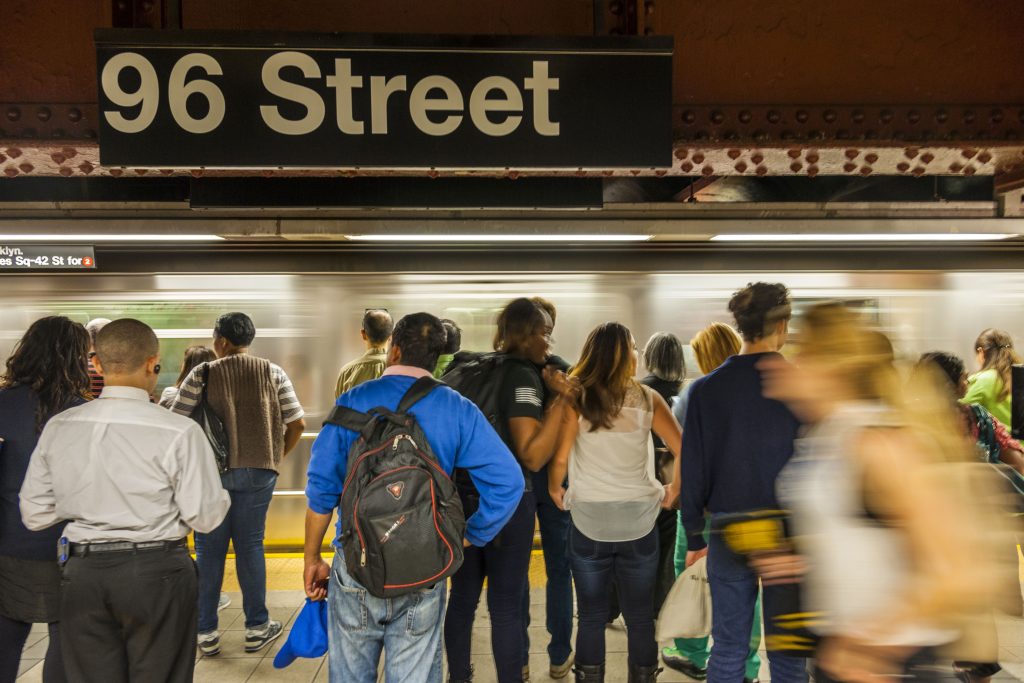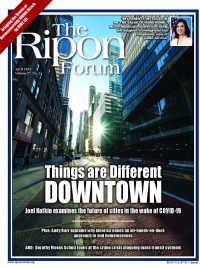
Our nation is in the middle of a crime crisis. From the dramatic increase in the number of murders to the sharp rise in the number of carjackings, Americans are increasingly feeling uneasy these days walking down the streets of many cities. Unfortunately, it’s not just city streets that are unsafe. America’s transit systems are also facing their own crime crisis.
According to a 2022 Mineta Transportation Institute study, the United States has more violent attacks on transit systems than any other economically advanced nation in the world. These attacks include stabbings, shootings, people pushed off platforms, and other random acts of violence. Even in New York, one of the few cities where there has been an increase in transit policing, violent assaults continue to occur. Recently on the same day, an elderly man was punched on a Brooklyn platform during the morning rush hour and a 38-year-old woman was punched on a Manhattan train during the evening rush hour.
Many of these attacks are committed by “non-destination riders” — homeless individuals, the mentally ill, and drug abusers who travel on transit systems for hours at a time, day-in and day-out each week. Many will enter stations and board trains without paying fares, often jumping turnstiles in front of transit officials who are effectively powerless to stop them because city officials have decided fare evasion is no longer a crime. Minor crimes such as trespassing and vandalism are also not being prosecuted and increasingly being ignored. Instead, in a number of cities, transit systems are replacing enforcement personnel with “transit ambassadors.” The job of these ambassadors is to explain riding rules and provide travel information to transit users. Incredibly, they are also required to teach fare evaders how to pay based on the naïve notion that ignorance — rather than a lack of consequence — is fueling the increase in jumping turnstiles.

According to a 2022 Mineta Transportation Institute study, the United States has more violent attacks on transit systems than any other economically advanced nation in the world.
But numbers don’t lie. In 2017, for example, the Washington, DC Metropolitan transit authority charged more than 15,000 people for either criminal or civil fare evasion violations. The following year, in 2018, the DC City Council voted to decriminalize fare evasion. By 2019, citations and arrests had decreased almost 50 percent, to just over 7,900. Through August of last year, that number had fallen to just under 300. Is there a connection between jumping turnstiles and rising crime rates? Between 2018 and 2021, aggravated assaults increased by 85 percent in the Washington metropolitan transit system. At the same time, other types of crime like robbery and pickpocketing went down. Philadelphia had a similar experience. After decriminalizing fare evasion in 2019, the City of Brotherly Love saw assaults spike by 84 percent on its transit system over the next two years. While the link between decriminalizing fare evasion and an increase in crime cannot be firmly established, there can be no doubt that violence increased in these transit systems as enforcement became more lax.
Last March, I testified before the U.S. Senate Committee on Banking, Housing and Urban Affairs about the Infrastructure Investment and Jobs Act (IIJA) and how it might be affecting transit crime. The answer I provided was simple — the law was having no effect. While systems used some funds to underwrite social services for riders who were most likely non-payers, no money was being spent to enhance overall system security. This lax approach has enabled fare evaders to take over trains, buses, stations, and waiting areas, making transit systems not only among the leading sites of crime and general disorderliness, but of fentanyl use, as well.
Indeed, fentanyl use in Denver’s Union Station resulted in two restrooms and five elevators being closed for cleansing. Yet despite rider complaints that the station was used mostly by non-riders, the Regional Transportation District — in the face of pushback from the American Civil Liberties Union and homeless advocacy groups — is currently undecided on whether to ban all-day riders and to update its code of conduct to address behavior that make commuters feel unsafe.
I testified before the U.S. Senate Committee on Banking, Housing and Urban Affairs about the Infrastructure Investment and Jobs Act and how it might be affecting transit crime. The answer I provided was simple — the law was having no effect.
A similar story is playing out in Seattle. Fentanyl use is so severe in the Emerald City that buses and trains are being outfitted with detectors as part of a research program to determine how the smoke circulates toward transit drivers. Ridership has lagged about 40 percent below January 2020 figures. One downtown station lost half its patrons, which may help to explain why, according to a Business Journal analysis, Seattle lost nearly 2,400 businesses since 2020. Could the loss reflect the fear patron feel at downtown stations, where in addition to fentanyl smokers, they face unlit tunnels, broken escalators, and fetid elevators?
Likewise, in Minneapolis/St. Paul, train operators have for years complained about drunks and drug users. In 2019, Metro Transit’s crime increased 35 percent over the previous year. More recently, a local news report found that drug use, intoxication, and overdoses occur regularly on trains and on platforms that lack fare-gates, making them easy hotspots for drug sales and use. Metro Transit blames lost riders on Covid-19 and changing commuter patterns; state legislators, deaf to requests for more police, are considering treating fare evasion like a parking ticket and having social workers assist the homeless and those experiencing mental health and substance abuse problems.
Smaller transit systems are experiencing similar problems, as well. In testimony last month about the IIJA, James Keel of the Greenville (SC) Transit Authority told the Senate Banking, Housing and Urban Affairs Committee about a post-pandemic increase in people experiencing mental illness and/or homelessness. “We are not equipped to provide potential riders with the mental health care they may need,” he stated bluntly. Greater Cleveland Regional Transit Authority CEO India Birdsong Terry shared similar testimony, telling the Committee about community policing officers, ambassadors, and crisis intervention specialists to address “the needs of our most vulnerable customers.” She said nothing, however, about fare-paying passengers most likely being made uncomfortable by those vulnerable customers, who are also, by the way, far less likely to have paid a fare.
This all may seem hard-hearted. And, depending on one’s perspective, it likely is. But with violent crime spiking in America’s cities and transit systems, cracking down on people who evade fares and jump turnstiles is a necessary step. Some might argue it is the 2023 equivalent of “Broken Windows”, the approach to policing that helped reduce violent crime in New York City in the 1990s and is based around a very simple and powerful premise — namely, stopping minor crimes prevents major lawlessness.
The Washington Metropolitan Transit Authority took a step toward endorsing this approach last month when it announced that it was planning to invest $35 million to make fare gates taller. The transit authorities in Philadelphia and San Francisco have announced similar efforts. While these are good investments, investing more on transit enforcement and less on transit ambassadors must remain on the table, too.
Otherwise, America’s transit systems will no longer be able to point to the pandemic or hybrid work as the reasons for their ridership losses. Instead, they will be forced to confront one of the harsh realities of today’s crime crisis — Americans no longer ride mass transit because they fear for their safety. And it is a fear that cities and mass transit authorities have helped to create.
Dorothy Moses Schulz, Ph.D., is an emerita professor at John Jay College of Criminal Justice. A Manhattan Institute Adjunct Fellow, she is a retired MTA-Metro North Railroad Police captain and has served as a safety and security consultant to transit agencies across the country.




